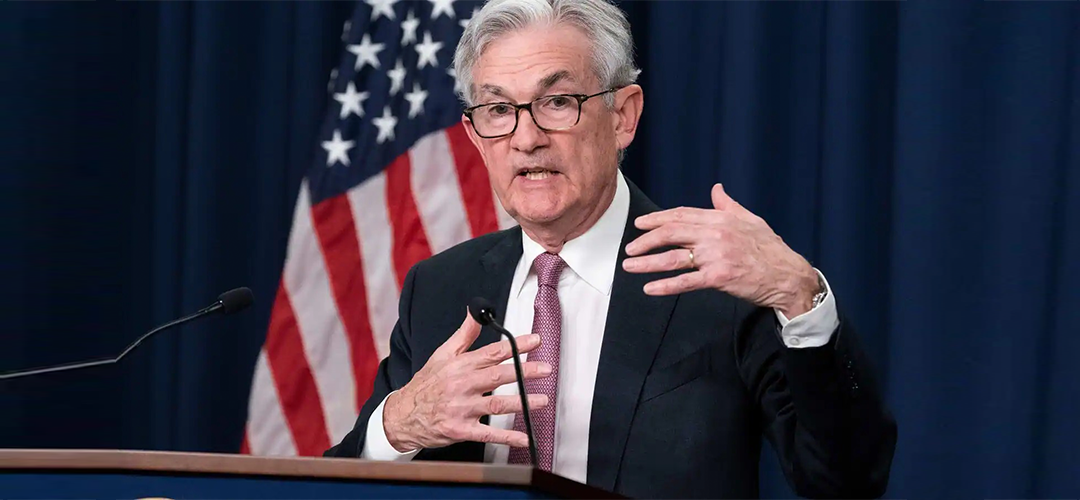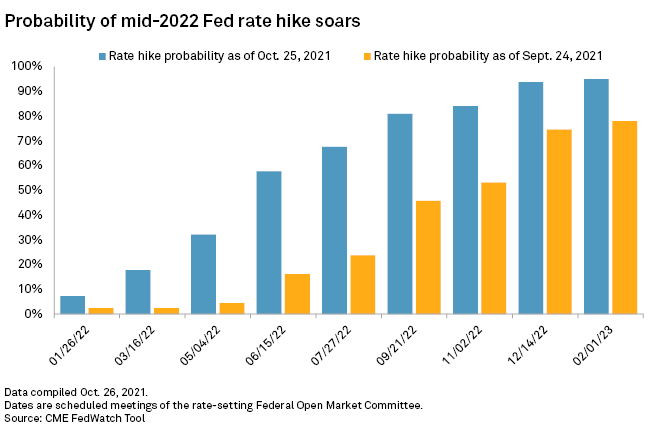FLIGHT OF CAPITAL?
June 25, 2022 | Expert Insights

Coming barely six weeks after upheaving the policy rate by half a percentage point and emphasising the likelihood of "additional 50-basis point increases,” the U.S. Federal Reserve Chairman Jerome Powell had dire predictions for investors. Stressing that it had become “essential” to bring inflation down, he justified the rate increase of 75 basis points. This was the first abrupt interest rate increase in more than 27 years, a move indicative of runaway inflation.
However, the largest rate increase in a quarter-century won't provide immediate relief from inflation. It will take time for higher borrowing costs to ease price pressures.
Background
The U.S. economy had witnessed turbulent times in the late 1960s and early 1970s. The Great Society legislation brought paramount spending programmes across a wide array of social dynamism. This was at a time when the U.S. fiscal condition was still recovering from the trillions of dollars sunk in the unwinnable Vietnam war. The enlarged fiscal imbalances thus complicated monetary policy.
The war-induced hike in energy prices has seriously eroded U.S. growth as it happened in 1972 when the Arab oil producers imposed their oil embargo that persisted for over five months. A similar oil shock occurred in 1979 when the Shah of Iran was overthrown by an Islamic revolution, leading to an overnight tripling of prices.
Post pandemic and in a situation exacerbated by the war in Ukraine, the U.S. economy is confronting a similar situation. And as they say, if the U.S. sneezes, the rest of the world catches a cold!

Analysis
The U.S. Consumer Price Index-based inflation spiked to a four-decade high of 8.6 per cent in May, spurred by housing, petrol and food price hikes, The U.S. Fed admitted that price pressures had unrolled to a broad ambit of goods and services. This would, perforce, require escalating interest rates till there was 'compelling evidence' that inflation was slowing down to its 2 per cent limit.
The Fed is focusing implacably on taming price gains through monetary action, including upheaving borrowing costs and gently tightening liquidity. Such a move perils squeezing the economy into a recession and causing a perceptible shrinking in the U.S. economy in 2023.
The Fed realises that the unyielding financial conditions have tempered demand, even as it postulates that real GDP growth has rebounded on brawny consumption spending. The Federal Reserve would not temporise to locomote policy to ‘restrictive’ levels if required. Central bankers now see the U.S. economy dilating by 1.7 per cent both in 2022 and 2023, slower than the March forecasts of 2.8 per cent and 2.2 per cent, respectively.
This was the biggest rate hike by the US central bank after 1994. At present, the economy is quite strong, and the Fed can focus primarily on reducing inflation. The problem is inflation is so high, at an annualised rate of 8.6 per cent, that bringing it down may require the highest rates in decades which could enervate the economy substantially. To execute this Fed is enacting soft landing- attempts to slow inflation without causing a recession.
Assessment
- India will face tighter financial conditions as the higher interest rates will lower the ‘push factor’ for risk capital to flow into emerging markets like India. If the Fed can slow demand fairly in the world’s largest consumer market, there will be less price pressure on globally traded artefacts, of which India is a net consumer.
- A rising trade deficit, delinquent growth in imports outperforming exports, and various other factors have already weakened the Indian rupee. The latest rate stroll by the American Fed will refine yields on U.S. treasuries and fortify the dollar's strength against the rupee, making the Indian financial market less attractive to foreign investors and stabilising outflows from the Indian bond and equity market. This will put further pressure on the Indian rupee.
- Both Indian and American consumers will face an erosion of their disposable income due to inflation. With the elimination of monetary accommodation by both the Fed and the Reserve Bank of India, higher debt servicing costs will undercuth real disposable incomes.








Comments